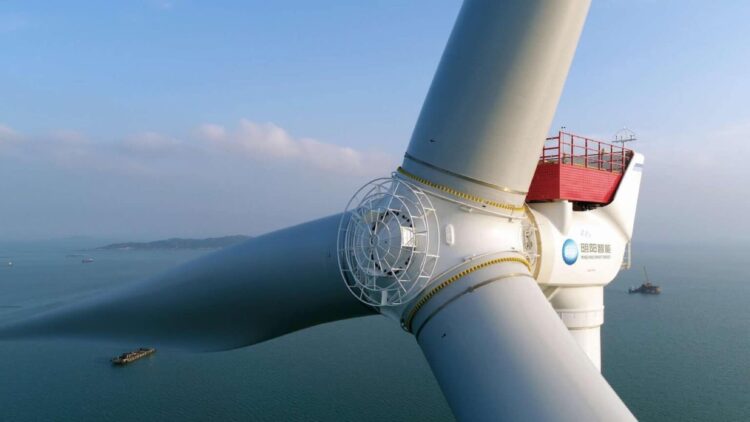China has done it again, and this time around it has turned on the largest offshore wind turbine in history, called the MingYang 20 MW. This extraordinary engineering invention represents a shift in technology’s renewable energy. The wind turbine is situated in Hainan, China’s southernmost province, which borders the South China Sea.
On August 28, Mingyang Smart Energy, a maker of wind turbines, installed this 20 MW clean energy source. The turbine from Mingyang has been thoughtfully engineered to resist the wrath of typhoons and flourish at medium-to-high wind speeds. It’s interesting to note that it can tolerate winds of up to 79.8 m/s. It is definitely one of the strongest and best-built wind turbines so far.
Experts, however, are observing unexpected consequences that raise questions about the wider impact of such large installations, even though their capabilities are revolutionary. This could be caused by various reasons since the project is still under observation to ensure that the same concept can be utilised beyond China for the advancement of renewable energy.
An engineering wonder: The creation of the biggest turbine in the world
The MingYang 20 MW is a reflection of China’s objectives to go green. The unit’s design is lightweight and versatile. The turbine’s generator, gearbox, and other vital parts are housed in this enormous nacelle. The turbine’s rotor diameter, which ranges from 260 to 292 meters (853 to 958 ft), is interesting. “A maximum swept area equivalent to nine soccer fields” is reportedly covered by this.
Furthermore, at an average wind speed of 8.5 m/s, the turbine can produce 80 million kWh per year. The turbine is a wonder too because it can generate electricity for up to 96,000 households per year, which indeed backs up China’s ambitious carbon neutrality goals by 2060. This turbine will reduce 66,000 metric tonnes of carbon dioxide gas emissions annually, contributing to environmental protection.
The turbine’s lightweight, modular design is optimised for effective operation, installation, and transportation. According to reports, the enormous turbine may even be installed in deep oceans. It is made to endure the most severe circumstances. The turbine is equipped with “active anti-typhoon technology,” which enables it to withstand Category 17 typhoon conditions, according to Interesting Engineering. China, which is vulnerable to typhoons, might gain from this.
What experts are observing about the inadvertent effects of scale
The MingYang 20 MW is promising a revolutionary, groundbreaking energy change to support the community, but that does not discard the fact that engineers and scientists are beginning to identify and notice unintended consequences of the turbine’s immense scale. The impact on local systems is one of the main concerns. For instance, vibrations electromagnetic fields generate could disturb marine life.
Turbulence is another problem. The enormous blades cause wind disturbances that may have an impact on neighbouring turbines and lower their efficiency. Furthermore, this enormous structure’s shadowing effect begs the question of how to best design wind farm layouts in the future. Although engineers state that size is important, future implications are as important too.
There is a price to pushing the limits of renewable energy
Now, there are things to consider when building something this magnificent and massive. Things such as resources needed to build this wind turbine. The MingYang turbine’s materials—rare earth metals, carbon fibre, and steel—have important geopolitical and environmental ramifications. Significant emissions are also produced during the manufacturing process; however, these are offset by the clean energy the turbine produces over its lifetime.
Offshore wind projects have the potential to produce significantly more energy for our requirements. These turbines can generate energy more consistently and effectively than onshore wind turbines because of the consistently high winds out at sea. Large towers and blades can also be transported to sea more easily by ship than by land. Additionally, larger turbines produce more energy.

